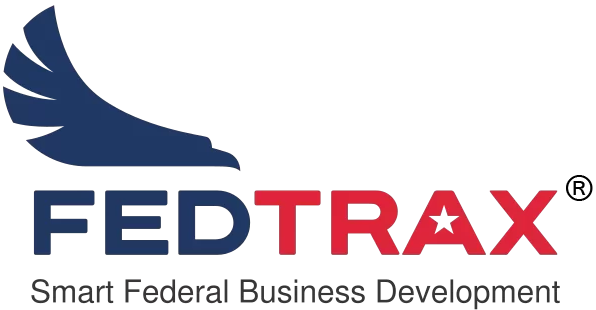
Anyone directly or indirectly involved in company sales knows that long-held truth that the bigger your personal sales network, the more opportunities you’ll get for your company. The challenge comes when we lose sight of the distinctions about how to effectively tap a personal network, resulting in no additional sales and weakening the network. So what should you watch out for? Here are five myths about using your sales network for business and how to do it the right way.
Use Your Sales Network Early and Often
If you have a big personal network and you’re in sales, conventional wisdom says to take advantage of it. Ask and you shall receive. Ask for the appointment. Ask for the order. Ask for the referral or connection. Ask for the job. The obvious problem here is overuse. You cannot keep asking for favors without giving value in return, and there is only so much value you can give, or put better, so much time you have to provide it and get things done for your own sales career. Susan Chritton, author of Personal Branding for Dummies, calls this nurturing your contacts to be a valuable network resource—in advance. Alas, most of us either forget or don’t have the time to manifest those best of intentions to be that resource, and instead we become clichéd friends in need. Overdo it and the phone calls stop getting returned.
Personal Sales Network Passion or Size
Would you rather have a really large sales network of hundreds or a few dozen that really care about you and see you as a valuable commodity regardless of what you do or where you work? Sorry, both is not the correct answer. I have thousands of Twitter followers and about 2000 LinkedIn connections, yet I’d be a fool to believe I can call on more than a handful for a referral or appointment. I just don’t have deep enough relationships with all of those people, and neither do you.
The social media networks perpetuate this myth by making it relatively easy to “connect” with dozens of people every day, and you’re motivated to do so. The very mechanism of LinkedInSearch, for instance, bases part of the algorithm for who comes up upon how connected you are, ah lah number of contacts, much like Google places an emphasis for website ranking on how many backlinks you have from other sites. That can and often is gamed to serve the no less noble purpose of increasing your target size in cyberspace, but be careful in assuming the relationship depth of each of those contacts is the same. Keep your closest network contacts, the handful, segmented for asking for referrals and meaningful appointments. You can still tap the uber-network for information (do you know where so and so works?), provided you bring something to the table first in the way of immediate value, and even then it’s a 40-60 shot.
Buying the Rolodex
You see this basic mistake in 75% of all online sales job postings.
“Requirement: bring a network of high level contacts in the Financial Services industry.”
Of course having a large number of contacts in your target vertical market is important, but too many managers think they can buy the Rolodex of job candidates or consultants and make rain by shaking it. In other words, they make this the number one factor in evaluating sales solutions. More important is the sales process a person follows, the ability to continually create and nurture new, fresh contacts, informational knowledge of the market, and intangibles like persistence and creativity. 80% of the salespeople with really big industry contact lists fall short of expectations because they lack these basics, and nobody’s Rolodex ever created a single sale by itself.
Sales Networks Give You a Sales “In”
Does it? Providing proven value to a prospect that needs what you sell when you are selling it really provides the sales lead in, especially in the short term. This is especially dangerous for connectors who know a lot of people through social means. They often produce surprisingly disappointing results in sales. Have you ever seen a salesperson that gets plenty of meetings that stall, changing the company ratio of appointments to sales for the worse? Why is that? These well-connected folks run the risk of getting the friend appointments when there is no current need. If your play is longer term and the friendly contact is indeed a prospect, there is nothing wrong with that. It builds top-of-mind market awareness of your company brand and the value you can provide when the time is right. If you need sales now, sympathy appointments will waste valuable time and come with the opportunity cost of missing viable appointments with those in a position of need today.
Unlimited Sales Network Referrals
Most Network Referral Partners I have seen never generate a single referral that results in business. This is perplexing for those of us who develop, or so we think, strategic referral partners in complementary fields that visit the same customers that we would like. This should work, right? Here’s the problem. As my former speaker colleague Bill Cates points out in his book, Unlimited Referrals, the best way to get referrals is to first give referrals. Ahh, again with the provide value first issue, but it’s simply true. When you’re trying to heat up the fireplace of sales referrals, to borrow an Earl Nightingale metaphor, you first need to feed it the wood of finding referral matches for that person’s business. Most people simply don’t do that, and when they do, they tend to give out bad referrals of accounts that may have internal issues or something that made them not want to do business with the account to start with. By giving out valuable referrals to target accounts without fear of losing them as your current customers, you make yourself, as Cates calls it, more referable.
Building a referral network starts with your current customers and turning them into advocates. It is hard work. True referral network partners are painstakingly built with understandings of what good referrals are for both sides and the relationships are nurtured frequently, with meetings routinely, no less than quarterly. Most of us don’t put in that kind of effort and wonder why our voluminous contacts produce such bad leads.
Look, a large sales network is always better than a small or non-existent one, but be careful to understand it for what it truly is. Mind the basics of sales with consistent process, providing the initial and ongoing value, and know that your massive network is but a piece of the sales puzzle and not the be all and end all, and meaningful relationships and sales will ultimately flourish.
